
Toronto is getting a pair of new public spaces connected by a linear park
A network of parks and public spaces is in the works for the heart of Toronto.
The City is advancing plans for its proposed Relic Linear Park network, which would bring a new linear path of public realm improvements, including a pair of park spaces, to the Grange Park neighbourhood.
This community-led vision will include architectural relic stones — similar to those found at the Guild Park and Gardens — and Indigenous artwork to form a pathway of art and public spaces that weaves between Queen Street West and Dundas Street West via Simcoe Street, Michael Sweet Avenue, and St. Patrick Street.
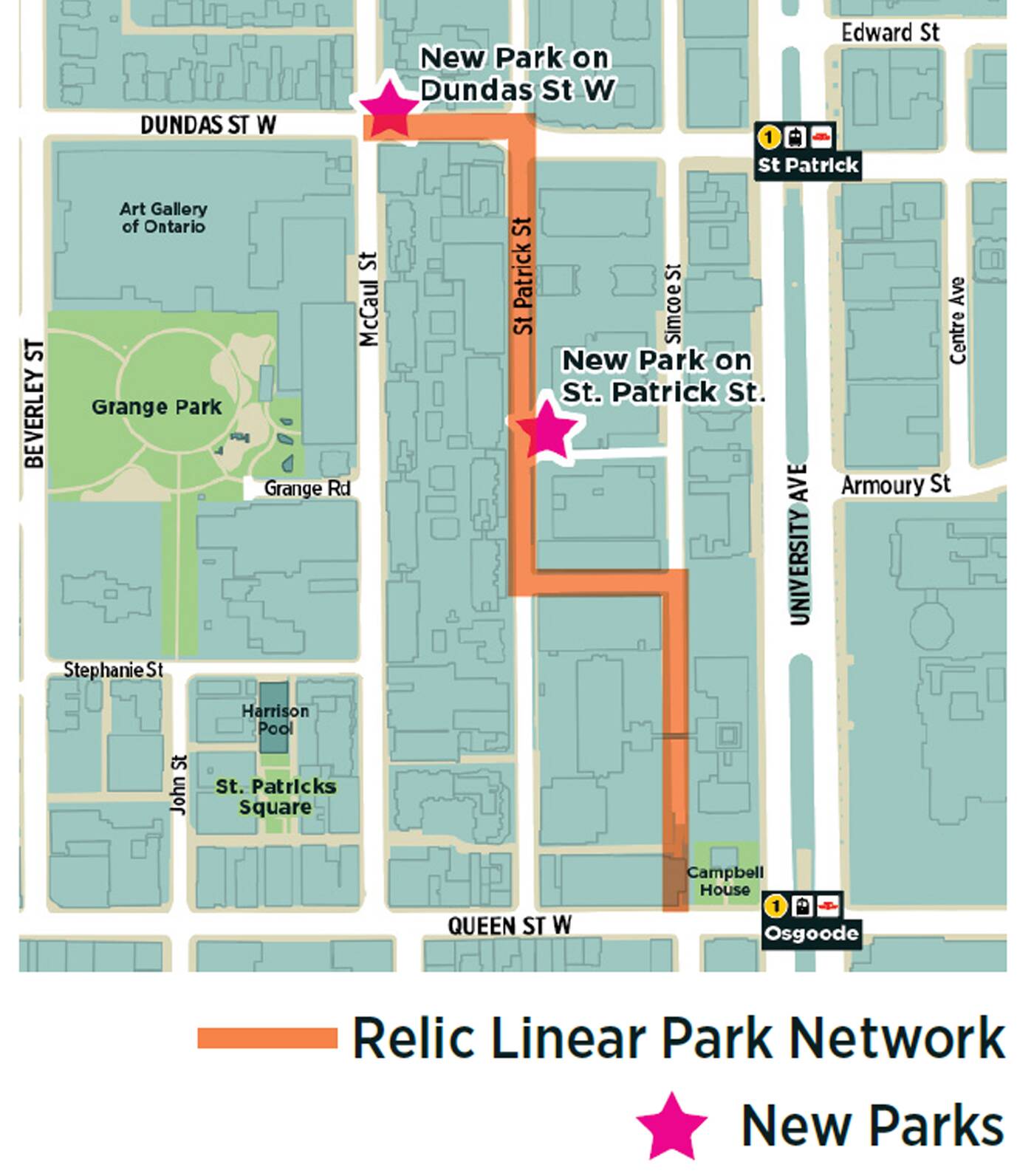
The plan includes two new parks: one on St. Patrick St. south of Dundas St W, and another at the northeast corner of Dundas St W and McCaul St.
St. Patrick Street Park
This space just south of Dundas is planned to take up 1,000 square metres, or roughly the same size as two tennis courts, and would join up with Simcoe Street via a privately owned, publicly accessible space (POPS).
Native trees and plantings would be incorporated, along with plentiful seating and tables, forming a flexible space capable of hosting community events.
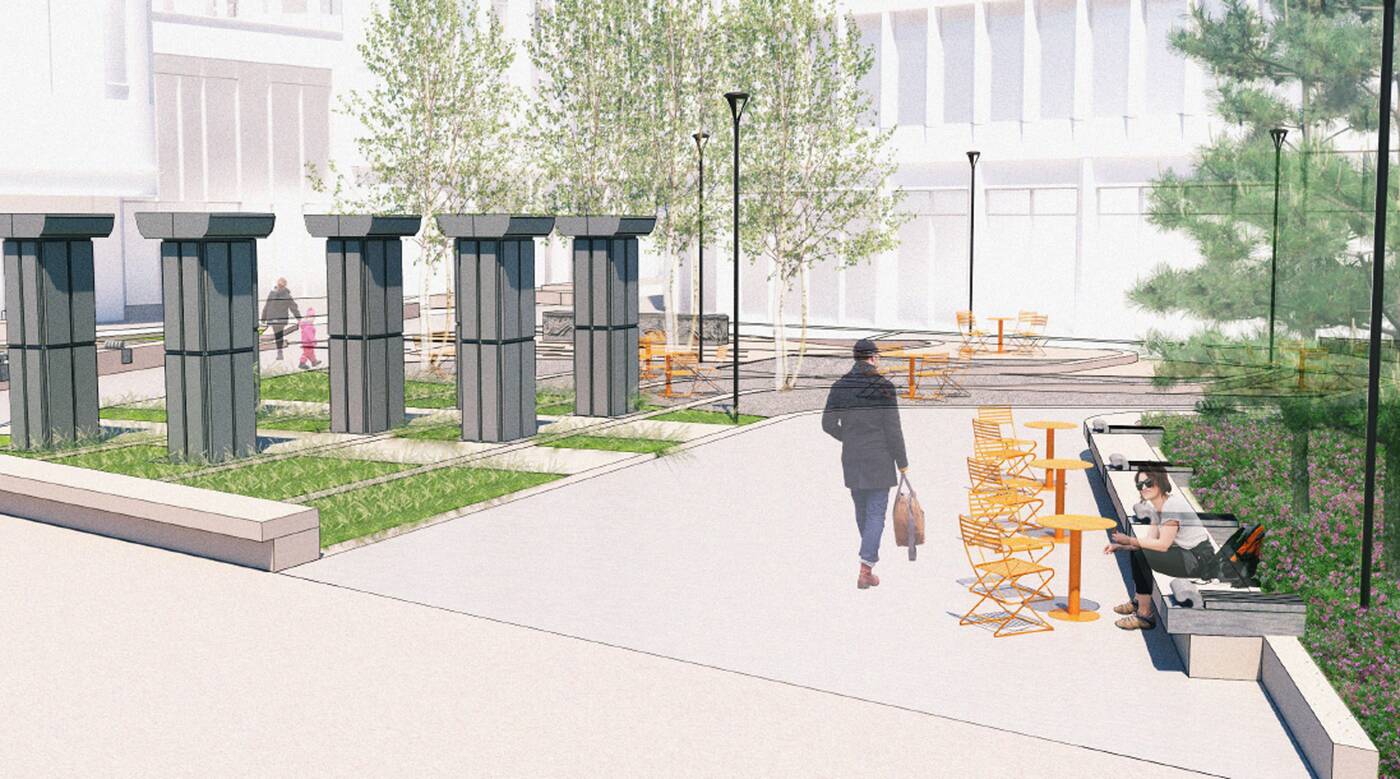
The centrepiece of the St. Patrick park will be a sculpture by Anishinaabe artist Michael Belmore dubbed 'Mishibizhiig: The Underwater Panther,' set amongst repurposed colonial architectural relics.
Belmore's sculpture consists of Canadian-sourced granite blocks, hand-carved with bas-relief images of mishibizhiig – or underwater panthers of Anishinaabe beliefs.
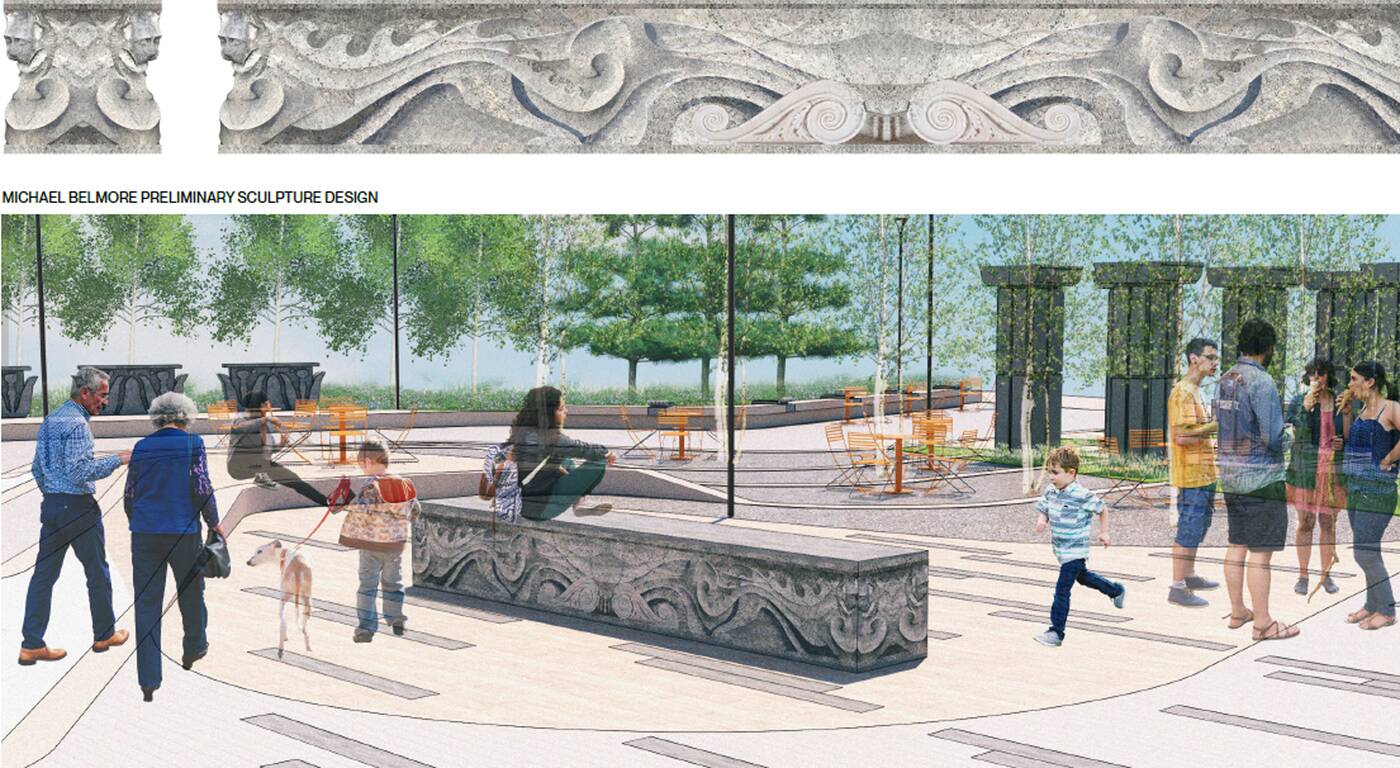
Combining the form of a lynx-like body with metallic scales, horns, and the tail of a serpent, the mishibizhiig is depicted in the sculpture in a style evocative of the European-inspired gargoyles and bas-reliefs seen on the preserved architectural relics that will line the public space.
Dundas Street West Park
This second park at the northeast corner of Dundas St. West and McCaul St. would measure among Toronto's smallest parks, at just 261 square metres, or approximately three-quarters the size of a regulation basketball court.
While it may seem a bit on the cozy side, the park will be connected to a POPS at its east end and will act as a gateway to the broader Relic Linear Park System.
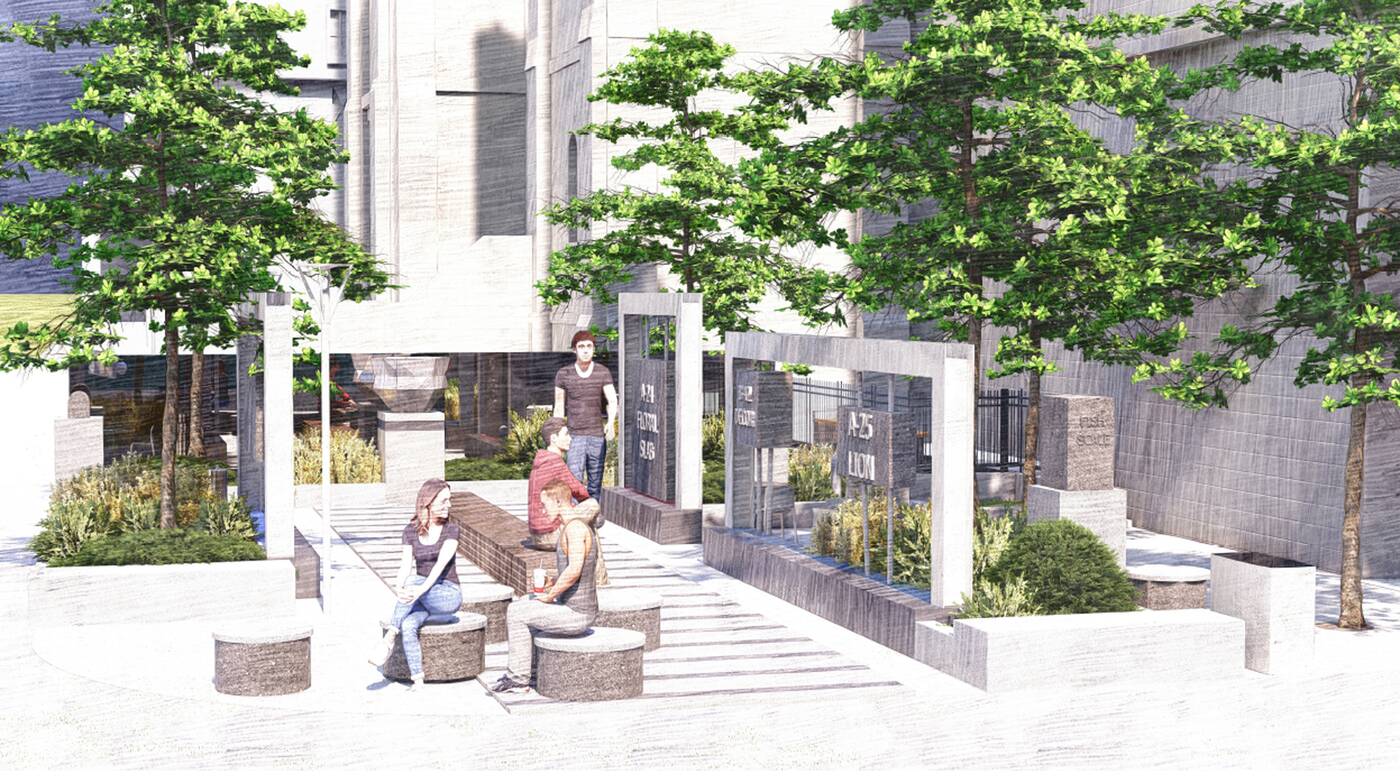
Similar to the St. Patrick park, the Dundas parkette will feature Indigenous art as its centrepiece.
The park will feature a series of steel I-beam frames in a nod to the Mohawk (Haudenosaunee) ironworkers, or 'skywalkers,' revered for their bravery in constructing bridges and skyscrapers for over a century.
Complementing these frames, an illuminated artwork by Jay Havens, artist and citizen of the Mohawk, Bear Clan from Six Nations of the Grand River, is designed to evoke Mohawk pottery, with traditional patterns that will allow light to pass through, beckoning passersby into the space after dark.
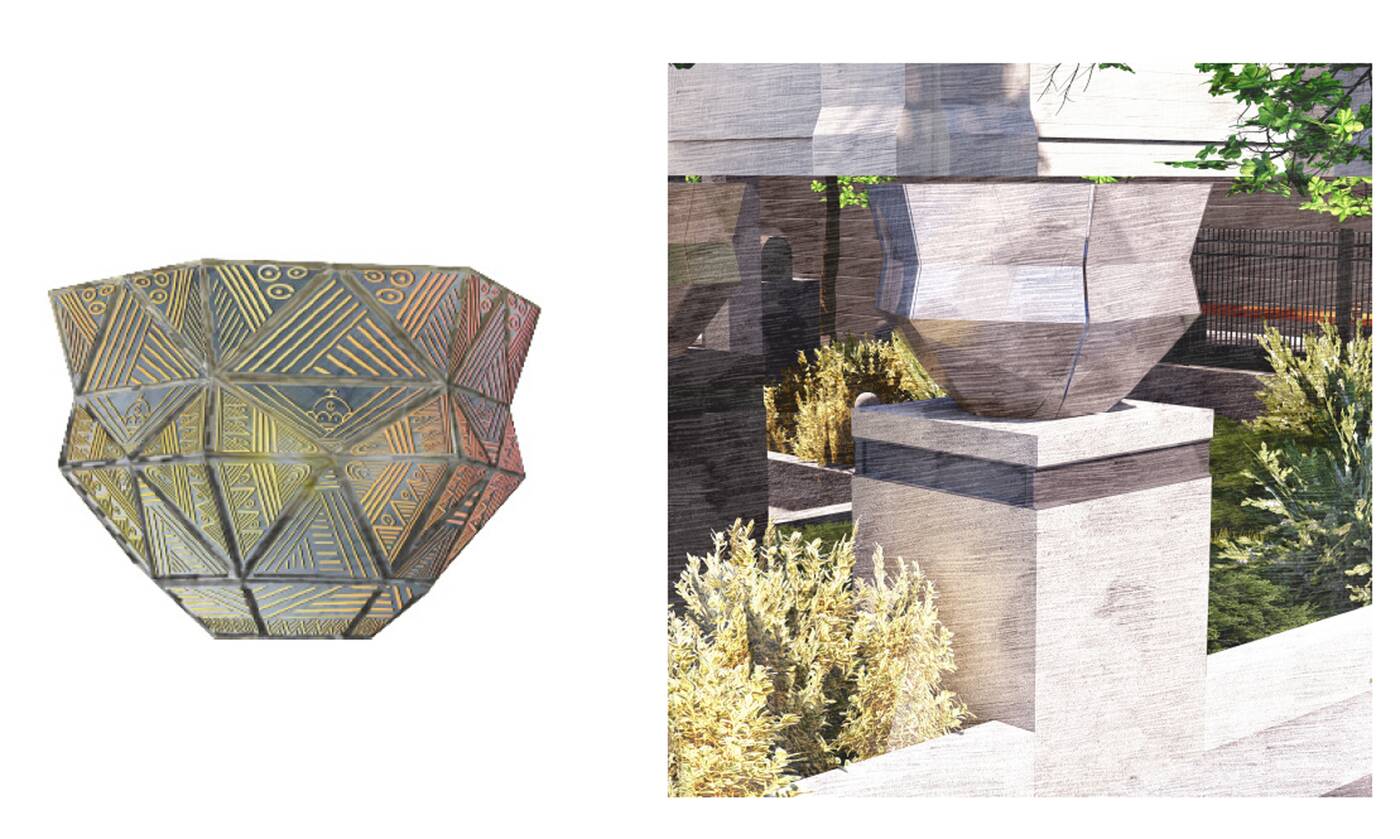
The City is currently seeking feedback from residents via a survey on the newly revealed park concepts, open for public voting until Nov. 12, 2023.
Once the ongoing community engagement and design development phase concludes, the project is expected to enter into the detailed design stage for 2024, with an anticipated construction start in early 2025.
The parks are currently expected to open at an undetermined point in 2025.
City of Toronto
Latest Videos
Latest Videos
Join the conversation Load comments







